Backyard Shenanigans: The Fascinating Sex Lives of Plants
From bees and blossoms to ferns and slime molds, your backyard is buzzing with reproductive drama—nature’s love story hidden in plain sight.
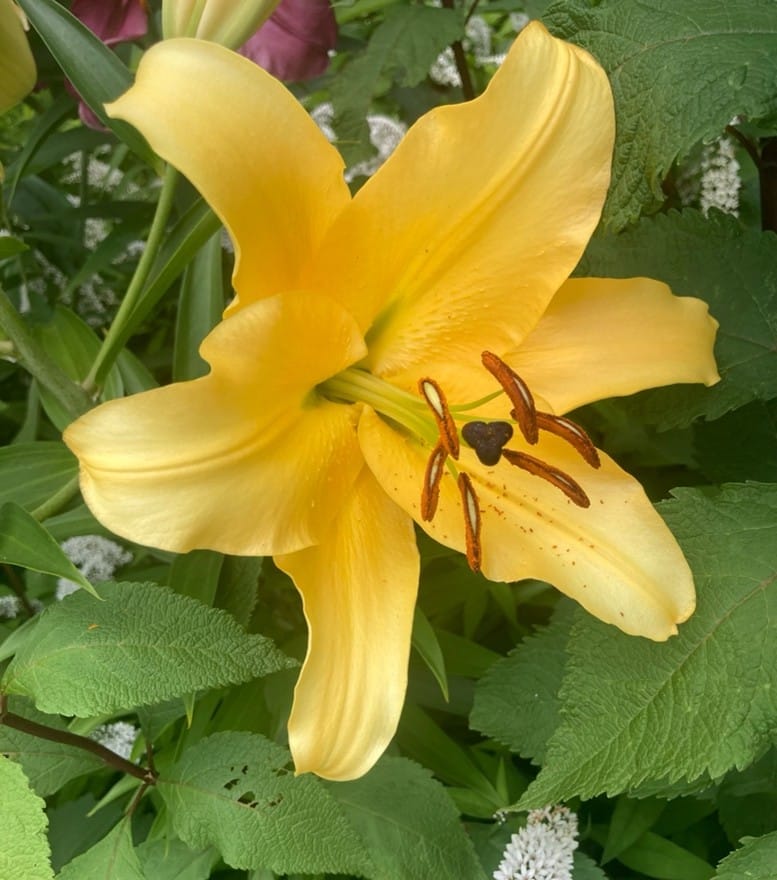
You may never have considered it, but there’s a lot of action going on in your backyard. The birds do it; the bees do it; all the mammals, reptiles, amphibians and insects do it. Even plants engage in sexual reproduction.
All living things that utilize sexual reproduction evolved from a single common ancestor way back in our family tree. Most of us know at least a little bit about the literal birds and the bees, but sexual reproduction in plants is a unique and fascinating process that takes many forms.
You might remember from biology class that flowers have pistils and stamens. The pistil is the female part of the plant that contains an ovary. The stamen is the male part of the plant which produces the pollen. For the plant to reproduce, the pollen must reach an ovary. (See any similarities to human reproduction here?) How the pollen reaches an ovary is done in a myriad of ways. (No comment.)
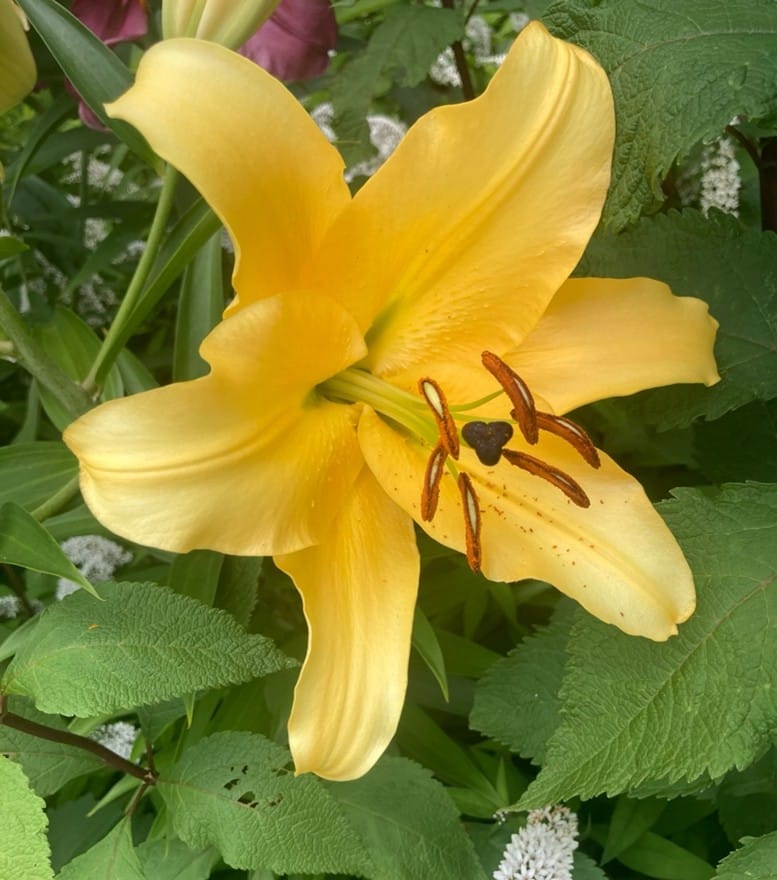
The classic example: a little honeybee enters a plant to sample the sweet nectar, gets pollen on its back, and then travels to another flower, depositing pollen on the pistil. Even the color of a flower can help with this process. For example, you may notice some flowers (e,g, yucca, evening primrose) emit a lot of aroma in the evening. Those flowers are often fertilized by nocturnal moths and tend to be light-colored and fragrant to facilitate finding them after dark. Pollen can be spread in other ways as well.
An interesting adaptation can be seen on some plants. Look at one flower on my hydrangea. See any pistils or stamen? Nope. This flower is sterile. What’s the evolutionary point of having sterile flowers if they can’t directly help in reproduction? They are strictly for advertising. The photo of my blue hydrangea shows how that works. Large showy sterile flowers can be seen a great distance away, attracting pollinators to the smaller fertile flowers. It’s like seeing that flashing DINER sign on the highway when you are hungry. You can’t eat it, but it will lead you to the food!
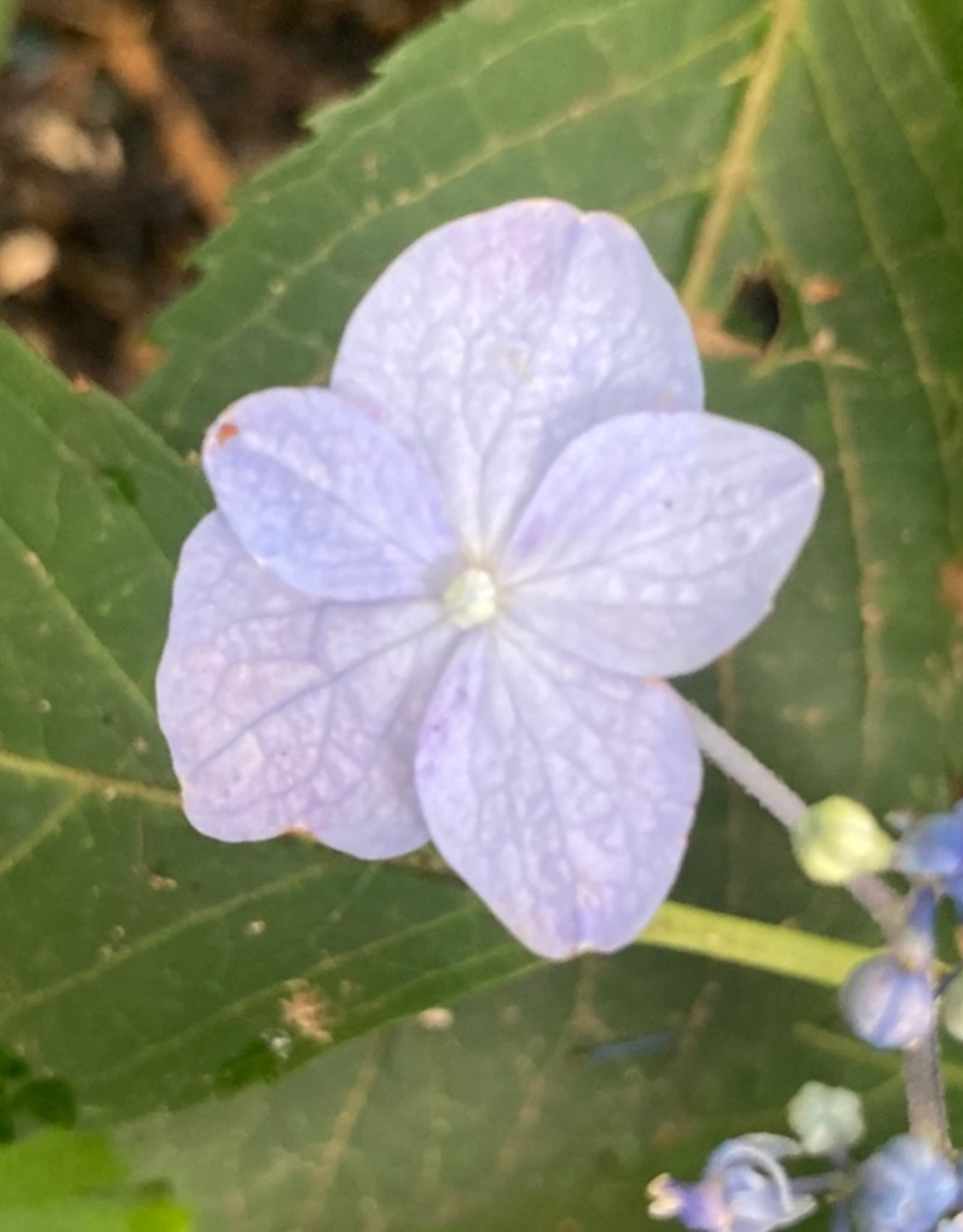
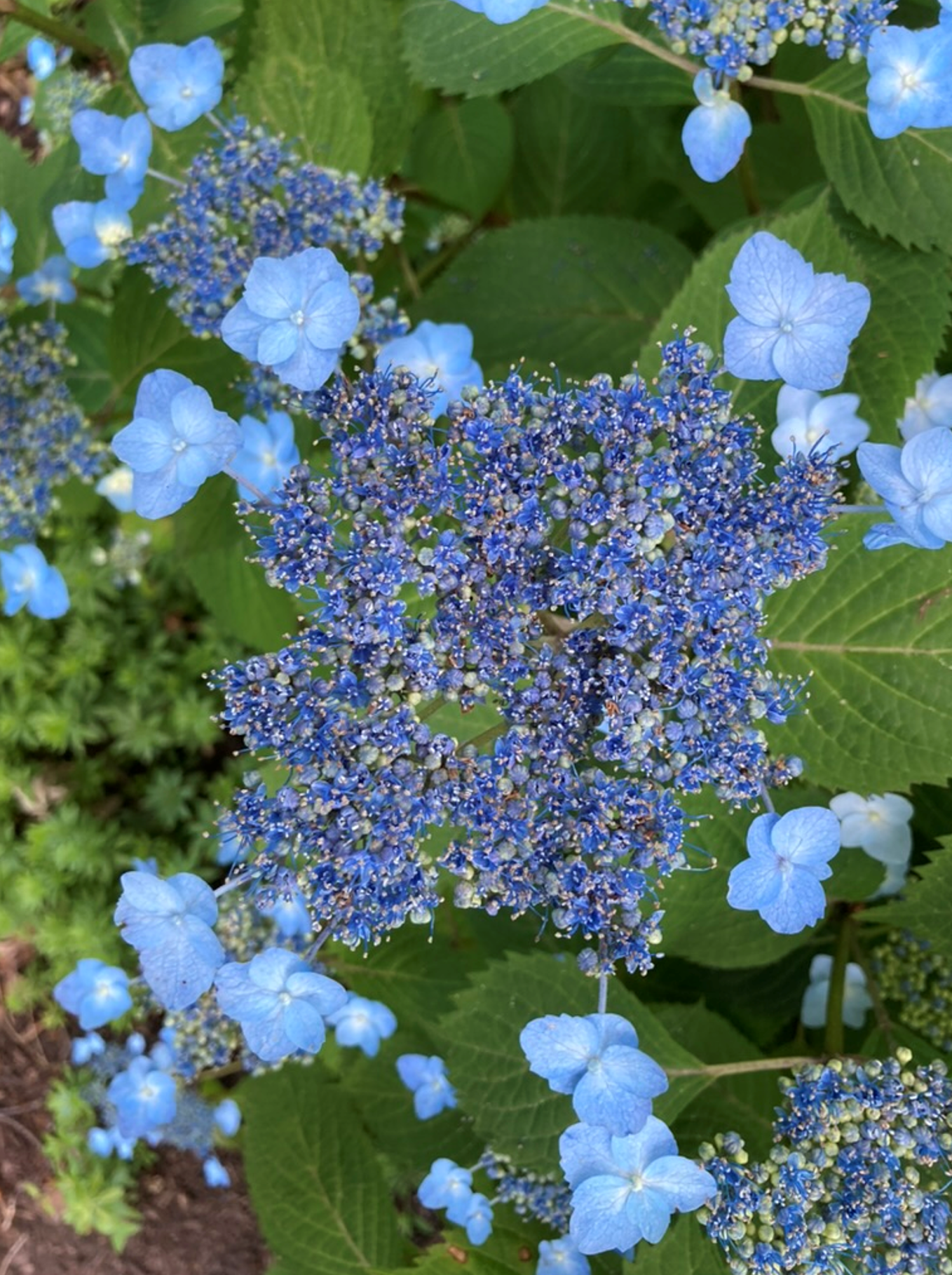
Sterile flowers draw the customers in to the fertile flowers. Photos by author.
Some plants just eject pollen into the air in massive quantities and hope it hits a female part “somewhere out there” (cue the music). Trees provide great examples of this strategy. The white pine has two types of cones, male and female. The male cones emit huge amounts of that green pollen – the kind you see everywhere in June. At least some of that pollen will land on a female cone which then produces fruit (pine nuts). The male cones are tiny. If you don’t know to look for them, you can easily miss them. The ground will be littered with them at the end of the green pollen season.

If anyone ever tells you they are affected by goldenrod pollen in the fall, you can reassure them that they are not. How can you be so sure? Goldenrod pollen is so heavy, it falls to the ground. It is not windborne, so it does not end up in your nose with other pollens, such as ragweed. Its pollen must be carried to the female parts by insects such as beetles and ants.
Ferns reproduce sexually as well. They produce and cast into the wind spores, which germinate into a gametophyte (a small, heart-shaped structure). The gametophyte then produces sperm and eggs. When water is present, the sperm can swim to the egg and fertilize it. (See, we’re not so different from plants after all.) Ferns have fertile fronds and sterile fronds. Fertile fronds on some ferns like cinnamon ferns are dramatic. Others require careful examination of the underside of their fronds. One of my favorite ferns in my yard is the “interrupted fern”. Each large frond has sterile blades at the base and at the top. The display of sterile blades is “interrupted” in the center by the fertile blades.
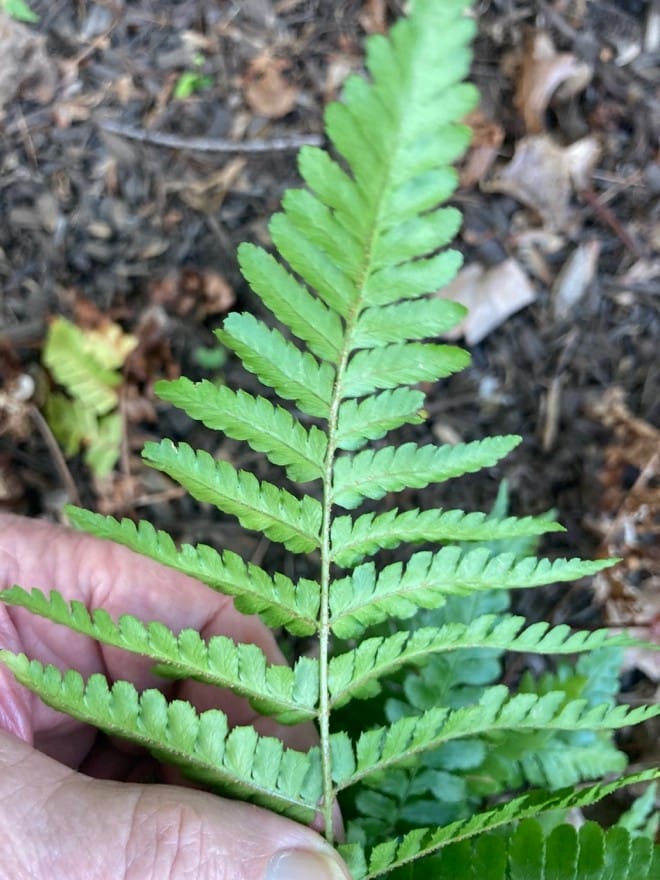

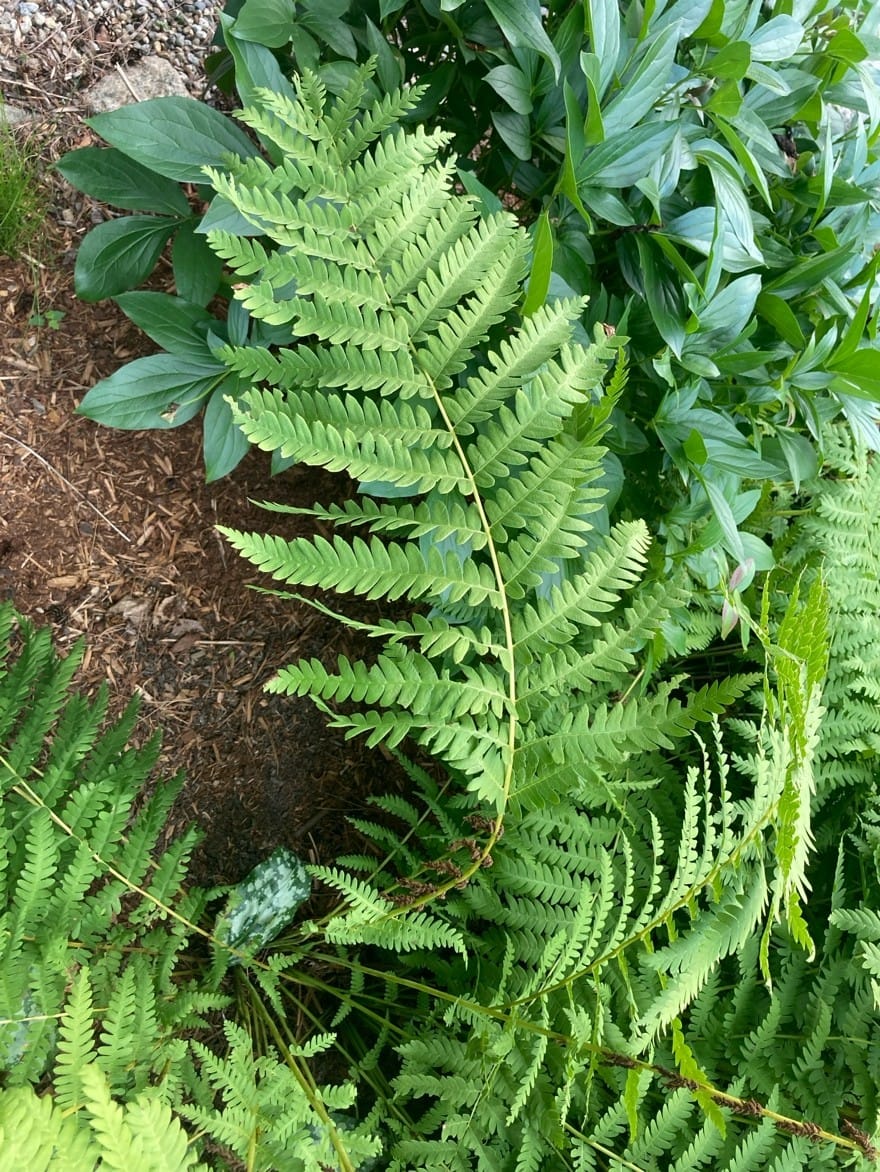
Underside of two fronds on the same fern plant: sterile on the left; fertile in the middle. Right: This frond shows sterile blades at each end, "interrupted" by fertile blades. Photos by author.
Earlier we talked about how all sexually reproducing species share a common ancestor. Included in this group is an unlikely character. While you’ve probably wondered about those slimy “blobs” that suddenly appear after rain, I bet you’ve never considered that you share a great-grandpa with them. Slime molds, a class distinct from plants and fungi, can be vividly colored in bright green or even pink. They are so nasty looking that one species is actually nicknamed “dog vomit slime.” As wildly different as they might seem from a human or even a plant, slime molds also engage in sexual reproduction. They release spores that land on the ground and wait for water to activate their reproductive process.

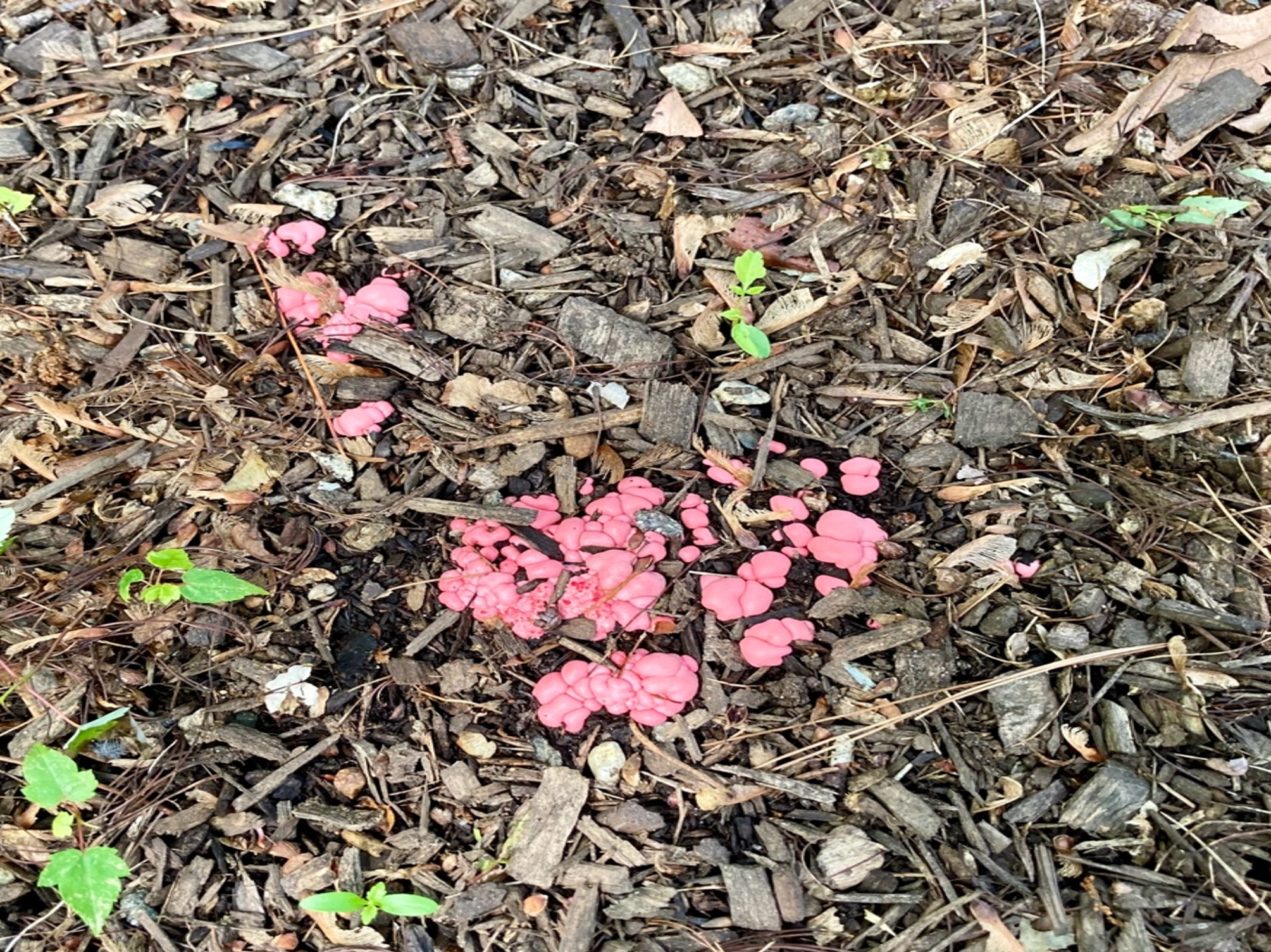
Left: "Slime Mold" by U.S. Fish and Wildlife Service - Midwest Region. Right: Pink slime mold (in author's yard)
So next time you step into your backyard, remember—you’re not just strolling past flowers, trees, and ferns. You’re walking through a living love story, one that’s been unfolding for over a billion years, with every bloom, spore, and slime mold playing its part in the grand drama of life.
Bill Boivin is a scientist, retired from 30 years of active duty with the United States Public Health Service. He is a Burlington Town Meeting Member and Conservation Commissioner. He and his wife, Jane, grew up in Lynn and now live in Burlington with their 2 mini dachshunds, 7 chickens, and Maya, a ball python. Bill and Jane have shared a love of nature, gardening, and wildlife for over 50 years. They have fostered, healed, raised, and loved a remarkable variety of animals in their time together. Learn more about Bill.




